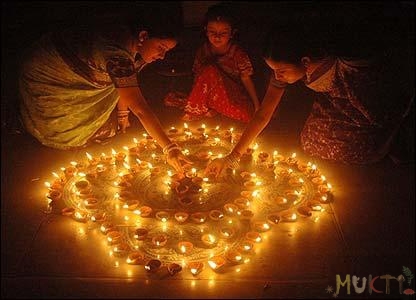 Diwali is here! Indian households will light up with clay lamps, candles and electric decorations. Fireworks will fill up the streets, and the sky.
Diwali is here! Indian households will light up with clay lamps, candles and electric decorations. Fireworks will fill up the streets, and the sky.
And we will eat sumptuous Indian food to celebrate the Festival of Lights. Diwali, or Deepavali.
_____
Indian households, particularly Bengali homes, practically spend their days and nights thinking about eating. At least, that’s how it used to be when we grew up.
The day begins planning for food: breakfast around 7 A.M., followed by lunch (around 10 A.M. on weekdays, and 1 P.M. on weekends), followed by afternoon snacks (around 4 P.M. when kids return from school), followed by evening snacks (around 7 P.M., when kids return from playground and the head of the household returns from work), followed by dinner (around 10 P.M.).
There are some Indian families where dinner is really late: around midnight. Believe it or not! Not good for health, though.
Of course, today, with more health consciousness and less available time, life has become “less exciting,” when it comes to having many meals and munches throughout the day.
Let’s talk about breakfast.
Breakfast used to be fun. Not like today’s routine cereal and milk, or toast and eggs — in affluent, Westernized families; or no breakfast in a very busy, nuclear family where everybody would go out to work at 8 A.M. sharp. Laid-back were those days when we grew up. Father would work in government office, with a stable and peaceful lifelong job, and mother would stay at home. Father would plan with mother the night before what next morning’s breakfast would be.
Weekdays and weekends, just for the simple reason that one has more time than the other, would have different sorts of breakfast.
On a regular weekday, father would go out to work at 10 A.M. (and in my case, my mother would also go out to work more or less at the same time, unless she had morning duties at the post office where she worked all her life). Therefore, breakfast would be made between 7 and 7.30 A.M. Weekday breakfast would include leftover roti (handmade wheat bread) from last night; but in order to make it delicious, mother would fry it with ghee on a flat skillet. The roti would turn dark brown, but father would take special supervisory role to make sure mother would not over-fry it, so that it turned black. Once it turned even remotely blackish, it’s no fun to munch on it anymore. It’s bitter.
This ghee-fried, crispy and crunchy, golden brown roti would be savored with some cane sugar, sugarcane or date-palm jaggery, or for the less-sweet-toothed, Indian style mango relish or achaar, or even leftover curry, warmed up on the clay oven.
For the more Westernized but less affluent, French toast, but not with pricy eggs, but with a batter made out of chickpea flour of besan. Equally delicious and nutritious, but less harmful to heart. Eat a few pieces of besan French toast with a dash of salt and pepper.
Weekend breakfast would be elaborate. Luchi (deep-fried white-flour, puffy bread), Paratha (triangular bread fried on a flat skillet with ghee or oil), served with very thinly sliced potato fries. Especially, in summer, fried Patol (a delicate vegetable of the cucumber family), or in winter, fried cauliflower. In families where they have health restrictions on use of oil or ghee, they would make a spicy curry with all of the above vegetables, with minimal oil (not mustard or coconut oil, both of which are high in cholesterol).
No breakfast is complete without some sweets. In Bengal, Mohan Bhog (in Hindi, they call it Halva) would be a major treat for kids and adults alike. It is made out of semolina and ghee, with generous amount of cane sugar added to it. Once in a while, perhaps a few, mouth-watering Ras-Gollah, or Gulab Jamun.
Then, after breakfast, it’s time to ponder carefully about the lunch menu. Time for the family member who has time, to go to the local farmer’s market or bazaar, a very important, daily ritual for most Indian households, even today.
Here is a Mukti’s Kitchen recipe for you, a gift on Diwali.
Poha (Flattened Rice with cauliflower, cashews and raisins)
Poha is originally a Marathi-Gujarati dish (from the Western states of Maharashtra and Gujarat), a popular vegetarian breakfast, with a fragrant nutty flavor. I made this in my in-laws house with the supervision of my father-in law. He travelled across India, and he introduced me to many vegetarian dishes. I still remember my First Poha making and getting nervous whether it would come out nice. Especially in your new home where people are watching over your cooking skills. You have to make sure your flattened rice is not sticky. It must be fluffy, and that is the trick.
Poha (a Bengali modification)
Prep time – 15 minutes
Cook time – 20 minutes
Total time – 35 minutes
Yield – 4-6 people
Ingredients
- 2 tablespoons of vegetable oil
- 1 tablespoon of ghee (clarified butter)
- 1 medium red onion, finely diced
- 3 tablespoons of cauliflower (very small florets about 1”/1” cut)
- ½ cup frozen peas
- 2 tablespoons of roasted cashew
- 2 tablespoons of golden raisins
- 2 cups of soaked flattened rice
- 1 teaspoon of salt
- ½ tablespoon of sugar
- 1 teaspoon of roasted cinnamon, cardamom and clove mixture (directions in procedure)
- Chopped cilantro
Procedure
How to soak the poha
- Wash 2 cups of flattened rice in cold water and add 3 cups of warm water. Give it a good swirl. Soak in warm water for 3-5 minutes, then drain the extra water completely, and let it sit for 4-5 minutes. This part is tricky to make your poha fluffy.
How to roast spices
- In a clean pan, add two inches of cinnamon, 5 green cardamoms, 7 cloves. Let them toast in a medium heat until you get a nice aroma (hold up the pot to look for the fumes coming from spices, it should only take 10-20 seconds, it is important not to burn your spices.)
- Transfer the whole spices, and grind them in a spice grinder until granular.
Now, the actual cooking process
- Heat the oil and ghee on a large skillet on medium flame, and add the finely diced onion.
- Add ½ teaspoon of salt and cauliflower, then fry together for 3-4 minutes.
- Add the peas and stir well, and fry for 1 minute. Cook until the vegetables are soft; then add cashews and raisins.
- Add the flattened rice and softly fold it (gently, not to mash the cooked vegetables and rice).
- Add 1 teaspoon of cardamom, cinnamon and clove toasted powder and sugar; mix well, then salt to taste.
- Serve a on a flat plate garnished with ½ teaspoon of toasted powder (cinnamon, cardamom and cloves), ½ teaspoon of ghee and chopped cilantro.
Serve hot.
Happy Diwali to All.

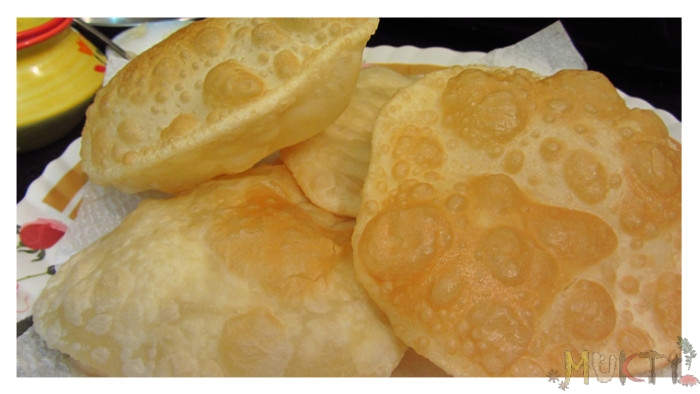
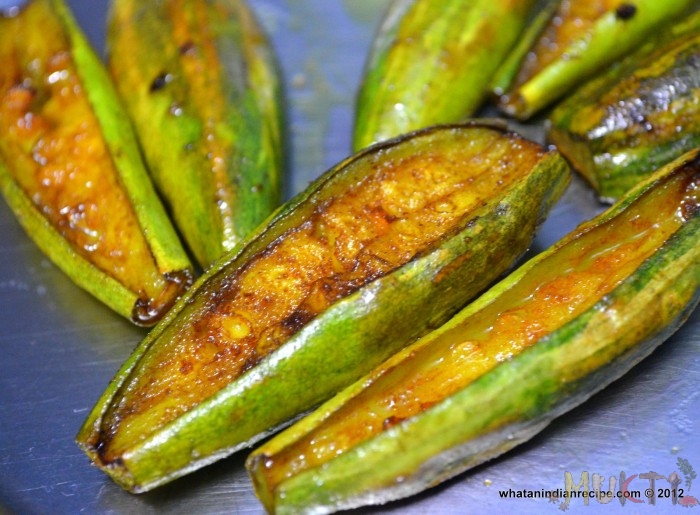
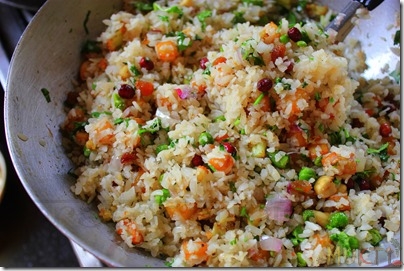
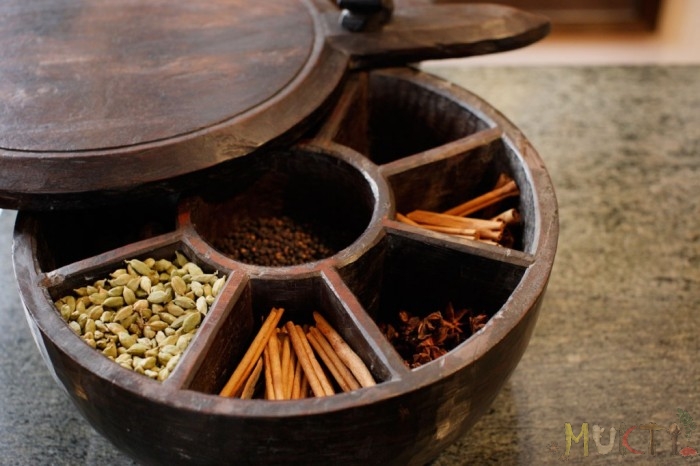
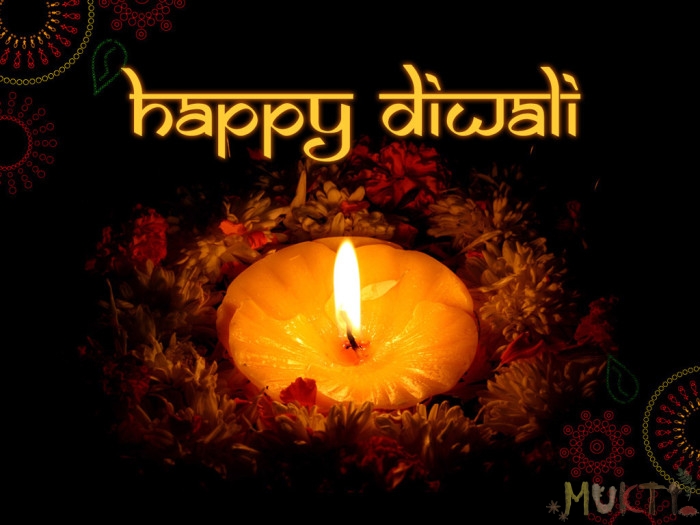
Thank you !